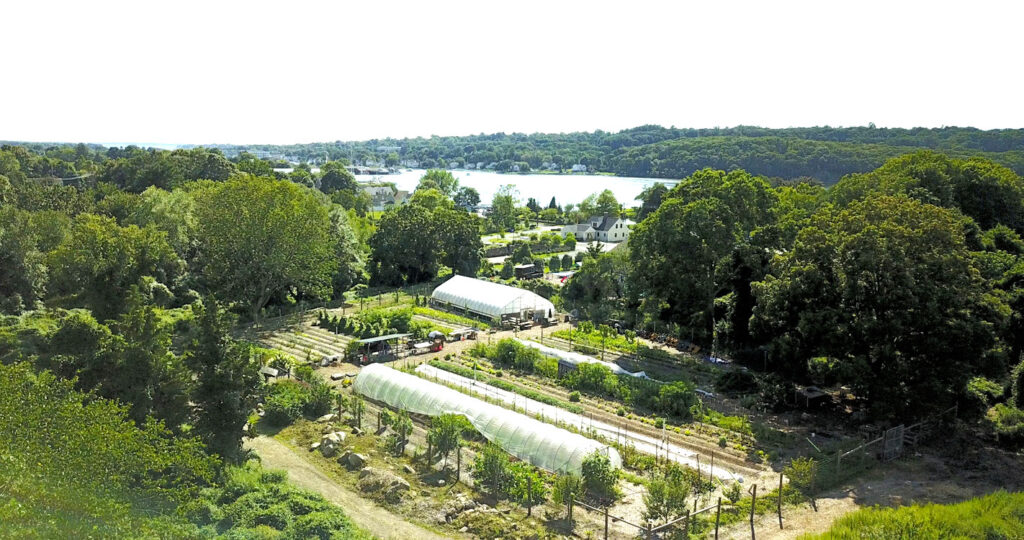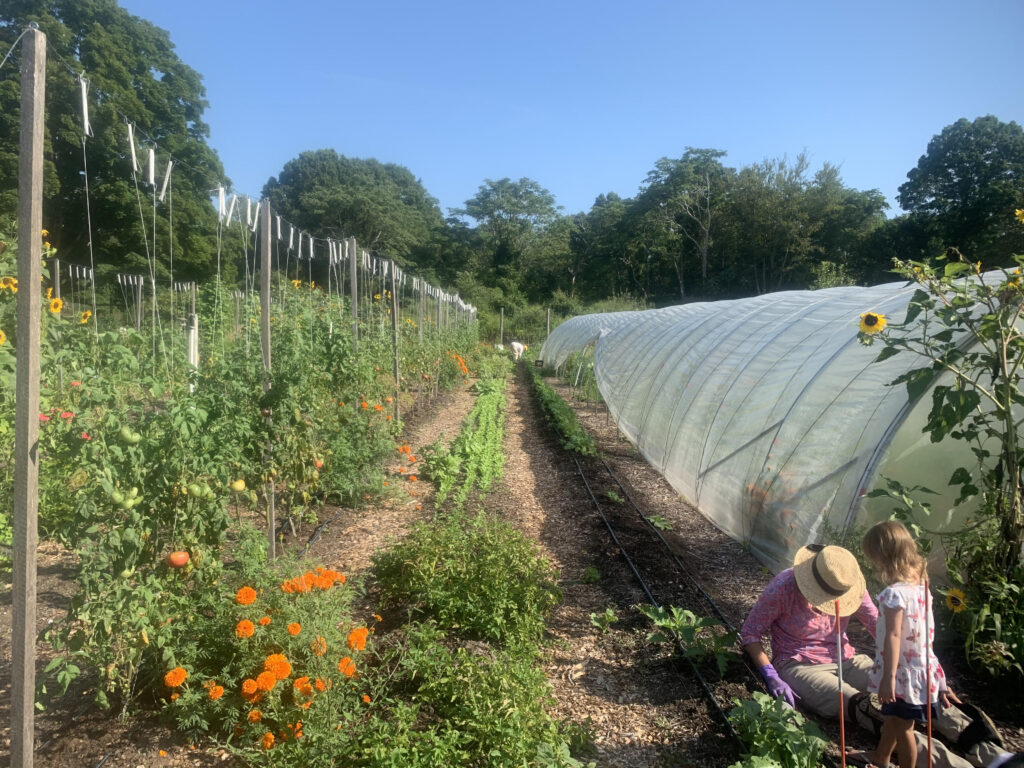This year presented some challenges to the Giving Garden. While we embraced the restrictions given us by Covid-19, this meant months without our volunteers’ helping hands, and reduced growing capacity. Unsure of what the coming months would hold with no one in the garden but Emma and myself, we determined to plant what we knew we could see through to harvest and tend to building the soil of the entire garden. We would feed the people whatever we could bring to harvest this year, and plan for an exponential growth next year.

When I had to make the decision to keep half of our garden closed and to back down from the heavy planting that I had planned in the fall of 2019, I chose to feed the soil since I could not feed the people.
In a typical year, we start 99% of what we plant in our regenerative, no till, no spray garden in our hoop house (unheated greenhouse). This year, thanks to Ramona Surprenant who started 90% of what we would grow, we had good production despite the reduced activity in the garden. Normally all of our bench shelves and walkways in the hoop are loaded with seedlings; and this year’s seedlings only took up the top of two benches.
Since we couldn’t farm in what I consider a “normal” fashion, we moved to feeding the soil using Korean Natural Farming methods – which is a self-sufficient farming practice that involves the cultivating of naturally occurring bacteria, fungi, nematodes, and other microorganisms in place of inorganic fertilizers to produce fertile soil. This year of planting heavy cover crops specifically to improve microbiology will put us in a good place for 2021 as we reduce our operating costs while increasing our production and nutritional quality of what we grow.
Unfortunately, the majority of our strawberries rotted in the field because we didn’t have harvesting hands, so hundreds of pounds of sweetness were enjoyed by our mice, chipmunks and squirrels (not to mention some lucky staff!). Fortunately, by June we were able to begin the safely scheduled return of volunteers to the Garden, and our harvest – while delayed – began again in earnest.
The garden grew despite an “extreme” drought in this Southeastern most tip of Connecticut, what we did plant grew strong and prolific. The biggest window on our soil health was the reduction of pest bugs in the garden.
Brix testing revealed increasing numbers of nutritional quality in our produce. This involves testing the internal sap from any plant leaf, fruit, vegetable or stem. There is a direct correlation between a plant’s Brix value and its taste, nutritional density, and overall quality. Increasing the Brix levels above 12 indicates the plant to be indigestible to bugs. Bugs are nature’s garbage collectors and only attack unhealthy plants. The bugs KNOW way before we do that a plant is not healthy and lacking the essential minerals and nutrients needed for superior health of the plant as well as the human.
This year we also started the process for growing many varieties of mushrooms to donate to the food bank. Another project we just started is the growing of saffron, ginger, paprika and turmeric to support our educational program as well as special programs.
As we reflect on this year, we embraced the restrictions given us by Covid-19 as DPNC rolled out Zoom classes as well as Facebook Live, thereby significantly increasing our public participation. We will have over 30 gardening classes over the next 10 months.
As we look ahead, 2021 will be the year of fruit production in our garden. Fruit is one of the most requested items by the food insecure.
Farm on



